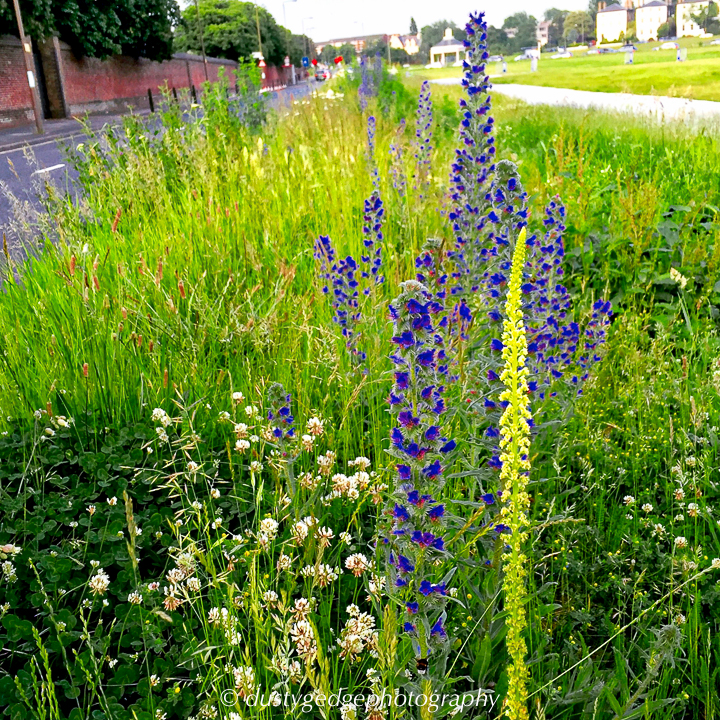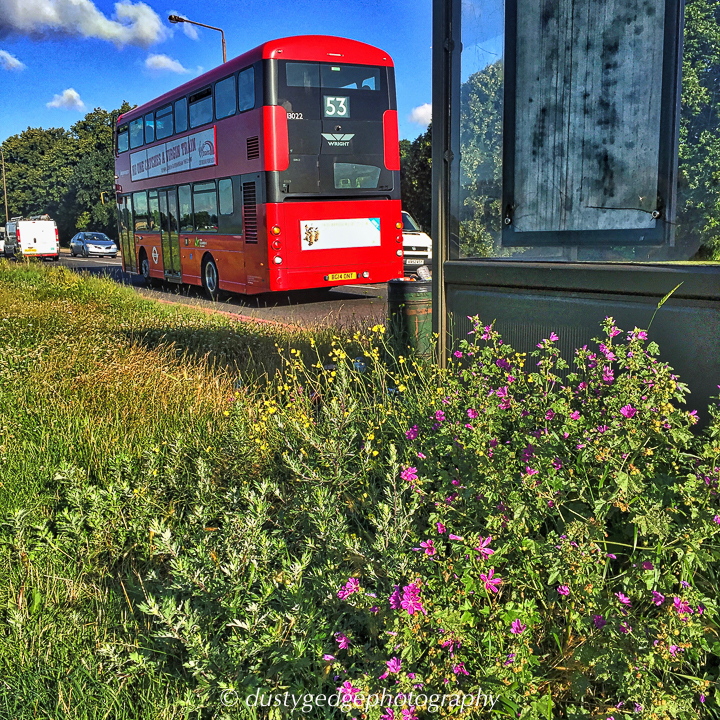Wildflower verges – we need more wildflower verges in London like those on Blackheath. As a result of posting images on twitter and Facebook, I have been inundated with tweets and messages. The tweets acknowledge the inherent beauty of these wildflower verges, and also say they make commuting to work more enjoyable. Blanket mowing of roadside grass really needs to become the rarity not the norm in London.
I have spent the last few months walking along the Blackheath Bee Road. For me, the roadside verges are redolent of a childhood spent in the countryside. These days it is rare to see such verges in the countryside, but many of the roadsides on Blackheath are flower rich and they have attracted a profusion of pollinators. This year I have noticed a whole new palette of wildflowers, which were not there ten years ago – toadflax, yellow rattle, hare’s foot clover and meadow vetchling have appeared. I have also noticed a few ‘exotics’, such as North American black-eyed Susan that may well have arrived from Greenwich Park next door.
When I posted this picture of the 380 bus route to Lewisham on twitter and Facebook, it generated a lot of interest.
The pictures that feature buses, bus stops or sign posts have started to frame how I take pictures of the verges. Red buses are synonymous with London. The following images clearly identify to me that these wildflower banks are part of the London landscape.
All of these images have been processed using HDR filters on my iPhone. I like the dreamy quality such filters give to the images. The Blackheath Bee Roads are probably not unique in London, but as part of the vision for the National Park City, I believe there should be a manifesto for more across the capital. And especially in the Central Activity Zone. Let’s bring to wild right into the heart of the city down at ground level and not just on green roofs.
Many of the roadsides on Blackheath are still being mown. Why some are mown and others not is a mystery to me. The clean cut edge appears to be embedded in urban landscape management. But when commuters and walkers express their delight at the wildflower impact, surely it is time to tame the mower? Of course there is a place for mowing. Much of the heath is close cropped for good reasons. There areas for people to sit or fly kites and play football. But grass verges in London do not need to have a “short back and sides”.
The final image is of a bus stop. There are several on the heath that just happened to part of the wildflower verges. Mallow, rocket and mugwort grow behind the the stop. Wouldn’t it be great if the National City Park idea leads to TFL creating bus stops with green roofs? We have already created sound designs. They just need to be implemented.

